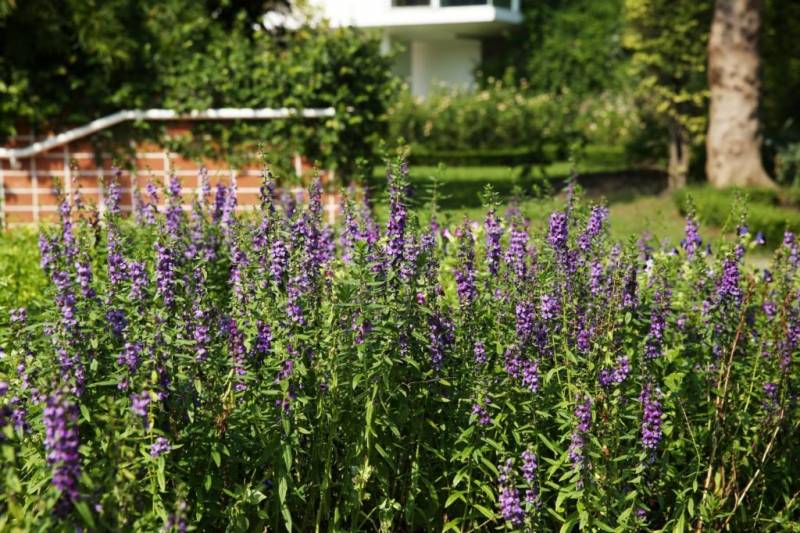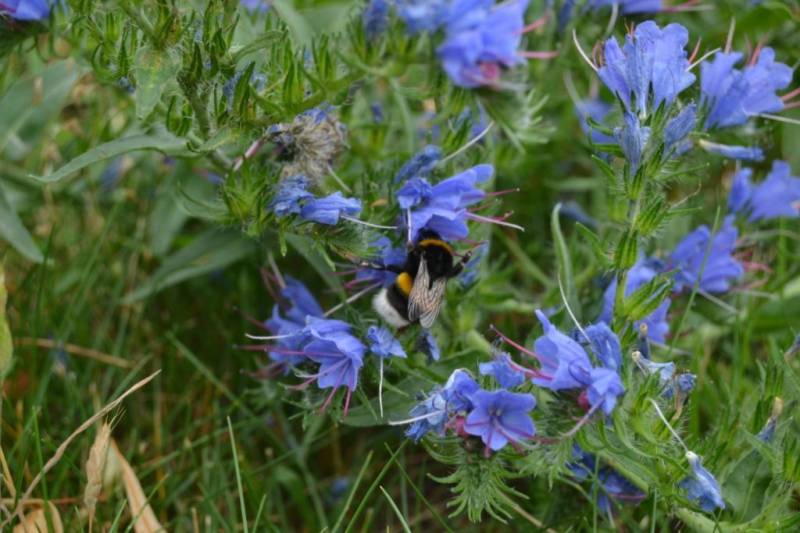Hyssop Plant: The Aromatic Garden Herbs At A Glance
Hyssop plant is extremely undemanding and robust. He also keeps some unpleasant animals at a distance. So hyssop is a must in every garden. The real hyssop – with the botanical name Hyssopus officinalis – belongs to the mint family (Lamiaceae). It joins the ranks of many popular herbs such as rosemary ( Rosmarinus officinalis ) or thyme ( Thymus Officinalis ). In total, the genus of Ysope ( Hyssopus ) includes six species.
Most of them are native to Russia and cannot be found in our gardens. Since the hyssop partially lignifies in growth, it is one of the semi-shrubs. Therefore, it should be cut regularly to keep it in shape. Otherwise, the herb is extremely easy to care for and, thanks to its extremely intense aroma, even drives away some pests. That is why hyssop proves to be a very suitable plant neighbor for more susceptible species. The attractive blue-violet flower also means a high ornamental value for the home garden. The flowering time is also extremely long from June to September.
Growing hyssop: In the garden bed or the tub
Table of Contents
Hyssop prefers a sunny location on well-drained and, if possible, lime-rich soil. This can contain nutrients. The only place he doesn’t feel particularly comfortable is in open areas with strong winds. Heavy soils should be loosened up with sand because of the risk of waterlogging. Of course, the hyssop can also be cultivated in pots or tubs on the terrace or balcony. Organic herb and seed soil are ideal for this. Basically, the container should be a little larger, as it can otherwise quickly become too narrow for the herb.
You can find detailed step-by-step instructions in our hyssop installation instructions.

Multiplication
There are several ways to multiply hyssop easily and quickly:
Increase hyssop by sowing
To prevent the small seedlings from freezing to death, it is advisable not to sow hyssop outdoors until the beginning of May. However, young plants of the aromatic herb can also be grown on the windowsill. If the seeds are placed in a seed tray from mid-May, stronger young plants can be planted after the ice saints in mid-May.
Propagate hyssop by cuttings
In spring or summer, young shoots about 5 cm in length can be removed and best placed in a special substrate for propagating cuttings. It is an advantage if a flower or flower buds have not yet formed, as this takes unnecessary strength and makes rooting more difficult. For the time when the cuttings do not yet have roots, they should be kept at high humidity – for example in a nursery box with a plastic cover.
You might so like: Akebia: Tips On Locating, Planting And Caring For Chocolate Wine
Multiply hyssop by lowering
Since hyssop is a subshrub, it is not possible to multiply it by dividing it. Instead, however, it is possible to bend down relatively strong but still flexible shoots and fix them in the ground, for example with a wire. The tip of the shoot protrudes vertically from the earth and the earth is piled up at the bending point. On the shoot, roots then form at the tied-down point and the newly created hyssop can be transplanted anywhere after being separated from the mother plant.
Water and fertilize hyssop
The hyssop can cope with a dry place in the rock garden. If it is grown in a normal bed, it is therefore not necessary to water it. With the culture in the pot, however, an occasional supply of water has to be made from time to time. However, waterlogging should be avoided at all costs so as not to provoke an infestation with life-threatening root fungi.
It doesn’t take much to ensure the supply of nutrients, because hyssop has anything but high nutritional requirements. It is sufficient to fertilize your plant once a year – for example with organic universal fertilizer.

Cut hyssop
So that the hyssop, which is woody in the lower part of the plant, does not get out of shape and the shoots become sparse and bare, an annual topiary is recommended. The plant can be shortened to a height of 10 cm. However, you must not cut into the woody parts of the plant, as the hyssop can no longer sprout here. The cut can be made in autumn, but it is even better to do it in spring before the new shoots. Then there is no threat of winter frost moving into the fresh interfaces and possibly letting parts of the shoots die off.
Regardless of whether the hyssop is cut in autumn or spring, it should be protected before winter. The subshrub is relatively hardy but prolonged, severe frosts can also affect it.
You might so like: Forget-Me-Not Flower: Expert Tips On Buy, Plant, And Care
Harvest and store hyssop
As such, hyssop can be harvested continuously as long as there are fresh shoots and leaves on the plant. As with so many herbs, however, the herb is most aromatic when harvested just before long-lasting flowering from June to September. Either the leaves are plucked off individually, or entire shoots are cut off.

In terms of flavor, it is the greatest pleasure when the hyssop is used freshly harvested. However, there are also ways to be able to use hyssop for a longer period after the harvest:
Dry hyssop
If hyssop is dried in a dry place at room temperature, it can be used as a dried spice for several months. If whole shoots are harvested, they can be easily hung up. When individual leaves are plucked, they are spread out on a towel to dry. However, due to drying, a slight loss of aroma has to be coped with.
Freeze hyssop
The hyssop’s leaves can also simply be frozen and removed from the refrigerator as needed. The hyssop is available almost freshly harvested and without any loss of flavor intensity.
Insert hyssop
Like almost all Mediterranean herbs, hyssop can also be placed in oil or vinegar. The shoots must be surrounded by the liquid so that the harvested parts of the plant do not start to go moldy. After two weeks, oil or vinegar will have absorbed the aromas and can be used as a spicy tarragon oil or vinegar for cooking, marinating, or for salad dressings.
Hyssop: use in the kitchen and in the garden
What are the aromatic herbs used for, which too rarely find their way into the gardens at home? Due to its strong aroma with a bitter note, hyssop is popular for sauces, salads, and various meat dishes. The beautiful hyssop flowers are also edible and make a great addition to the plate as a stylish garnish.
Taking it has a pleasant side effect: Just like the closely related sage, hyssop also has a soothing effect on inflammation of the oral mucosa. It should also have a beneficial effect on sensitivities of the gastrointestinal tract. However, hyssop is no longer used as a medicinal product, as it can trigger cramps in higher doses due to the ingredients it contains.
A very special property of hyssop makes it interesting for another use. It can be used as a natural plant protection product. Its intense smell and high content of its specific ingredients have a repellent effect on some pests such as caterpillars, snails, or aphids. If other plants are susceptible to these pests, it can sometimes help to plant hyssop in the immediate vicinity.






